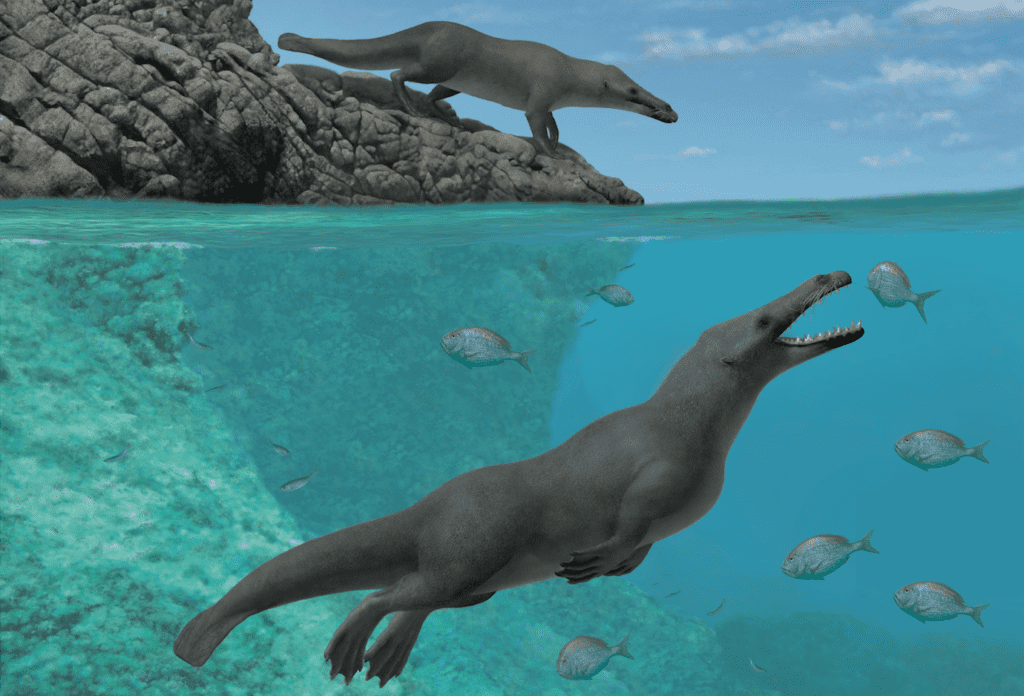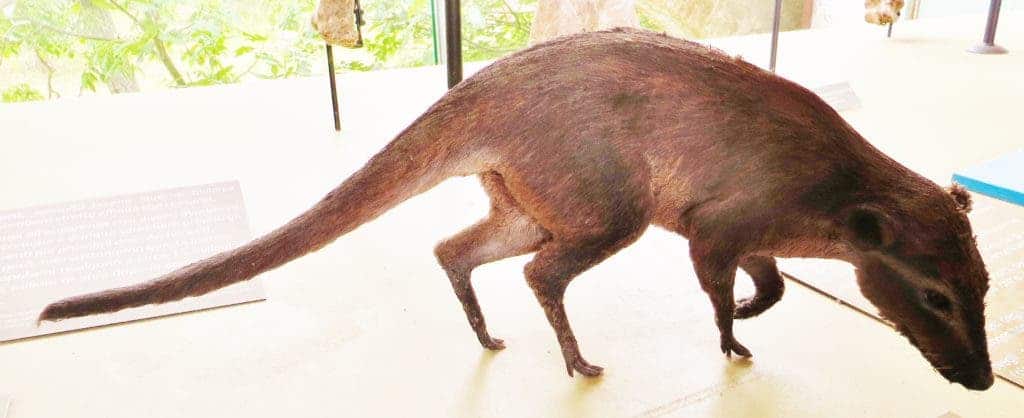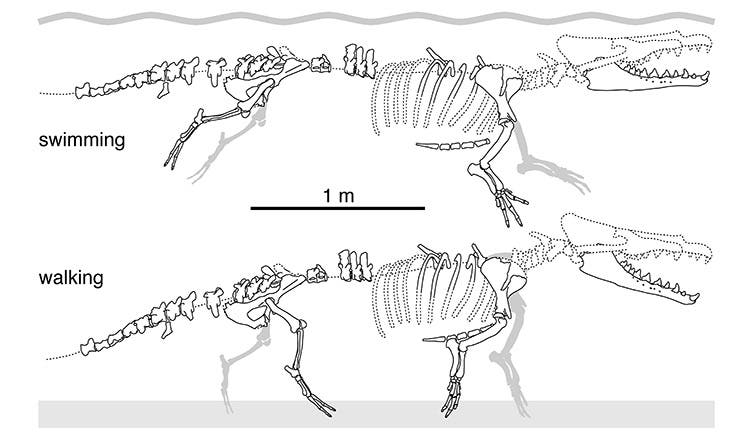Whales have one of the most fascinating evolutionary stories. Their ancestors adapted to a terrestrial lifestyle and then gradually moved back to the seas — a most unlikely adaptation. Now, paleontologists have caught a creature in this evolutionary act: they’ve discovered traces of a whale ancestor that had legs and hooves. Researchers believe that this unusual creature braved the trip from Africa to South America.

The evolutionary history of cetaceans (the group that includes whales, dolphins, and porpoises) sounds like an elaborate prank. The group which today includes excellent swimmers and the largest organism in our planet’s history (blue whale) emerged from small, deer-like creatures with four toes, each one ending in a small hoof. But the anatomic studies of current creatures and the paleontologic findings leave no room for interpretation.
A particularly interesting missing link found in India suggests that the last whale precursors took to the water in times of danger but came onto land to give birth and eat. Gradually, they transitioned from terrestrial to marine creatures. They tended to spend more and more time in an aquatic environment, but were also capable of terrestrial life — much like beavers and otters today.

Some 42 million years ago, while it was still capable of walking on land, one such creature undertook a daring trip: from Africa to South America. While back then, the distance between these continents was two times smaller, it was still an amazing feat. Its fossil has now been found on the coastal plains of Peru, which are well known for their rich deposits of ancient marine fossils. The fossil offers new insights into how these amazing creatures adapted to life in the water and expanded from the Indian subcontinent to the rest of the world. Dr. Olivier Lambert, from the Royal Belgian Institute of Natural Sciences, who co-authored the study, describes the finding:
‘This is the first indisputable record of a quadrupedal whale skeleton for the whole Pacific Ocean, probably the oldest for the Americas and the most complete outside India and Pakistan.’

The newly-discovered creature, called Peregocetus pacificus, was dated to 42.6 million years ago. Its hind legs were only a bit shorter than its front legs and it had tiny hooves on each toe and finger, suggesting it was very much capable of trotting about on land. However, other features indicate it was also well-adapted to aquatic life. Its hind feet bones indicate that despite its hooves, it had webbed feat. It also sports beaver-like tail bones, indicating that the tail was well-adapted to swimming. These biological features, well-suited for both aquatic and terrestrial life, indicate that this is a transitional creature, which makes it very important in understanding whae evolution.
‘The evolution of whales is perhaps the best-documented example of macroevolution that we have, with the group going from small, dog-sized, hoofed mammals to the giants of the ocean we know and love today,’ Travis Park, a postdoctoral fellow studying cetacean evolution, told the Natural History Museum. ‘However, despite having a good fossil record of the different stages involved, there are still questions remaining as to the routes that early whales took when they first spread around the world.’
The finding also indicates that the dispersal of early whales, while steady, was not exactly straightforward. They went from India to North Africa, and then to South America. From there, some individuals (like this one) crossed the continent, while others went on to North America. It took almost 10 million years for whales to colonize the entire planet.
The study “An Amphibious Whale from the Middle Eocene of Peru Reveals Early South Pacific Dispersal of Quadrupedal Cetaceans” has been published in Current Biology.






